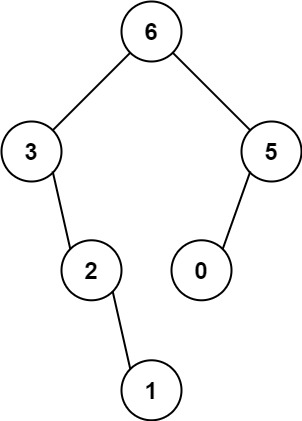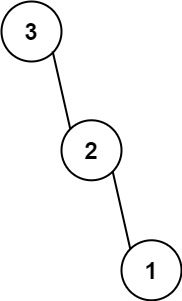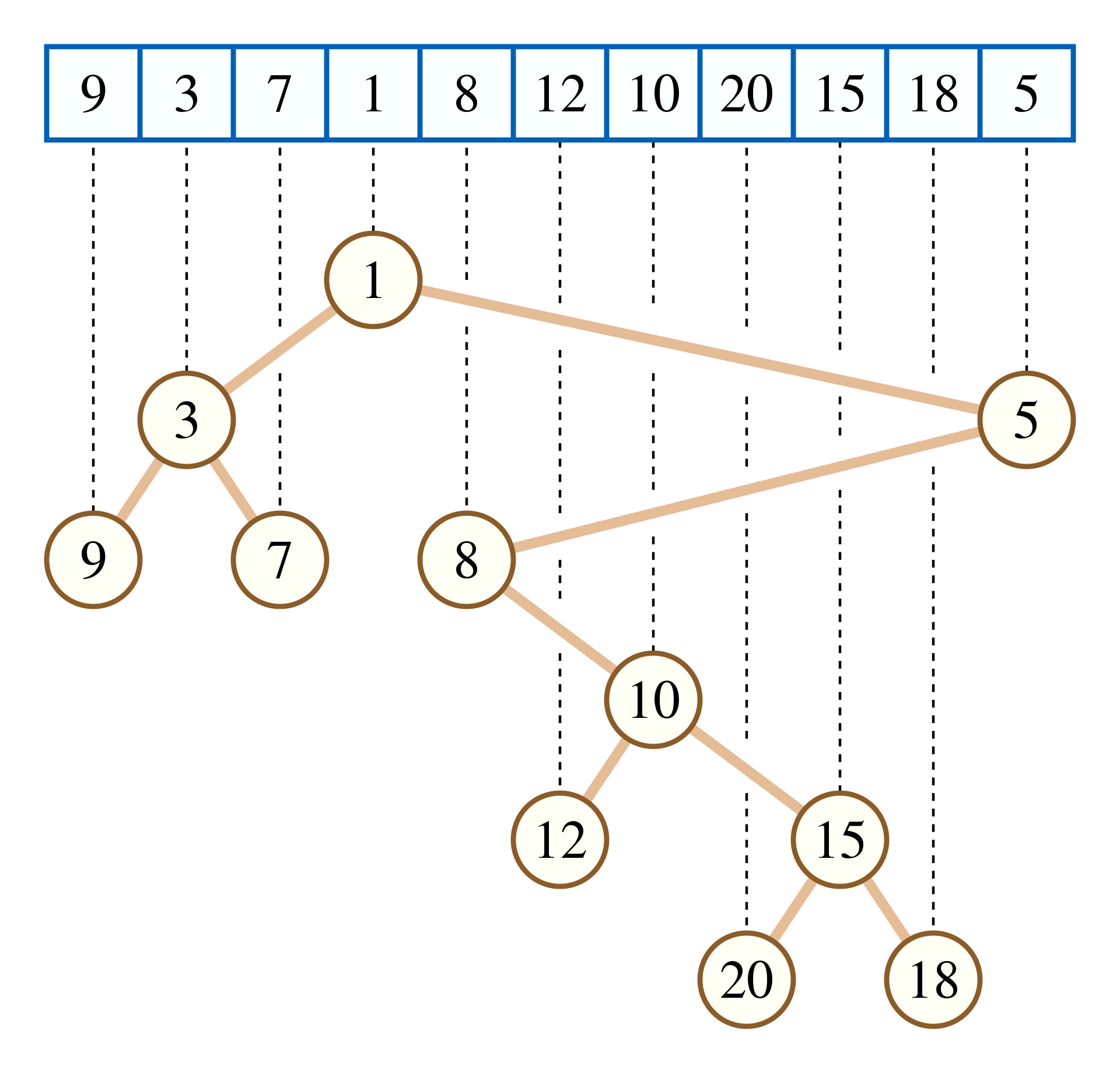| ID | Title | Difficulty | |
|---|---|---|---|
| Loading... | |||
654. Maximum Binary Tree
Problem
You are given an integer array nums with no duplicates. A maximum binary tree can be built recursively from nums using the following algorithm:
Create a root node whose value is the maximum value in nums.
Recursively build the left subtree on the subarray prefix to the left of the maximum value.
Recursively build the right subtree on the subarray suffix to the right of the maximum value.
Return the maximum binary tree built from nums.
Example 1:

Input: nums = [3,2,1,6,0,5]
Output: [6,3,5,null,2,0,null,null,1]
Explanation: The recursive calls are as follow:
- The largest value in [3,2,1,6,0,5] is 6. Left prefix is [3,2,1] and right suffix is [0,5].
- The largest value in [3,2,1] is 3. Left prefix is [] and right suffix is [2,1].
- Empty array, so no child.
- The largest value in [2,1] is 2. Left prefix is [] and right suffix is [1].
- Empty array, so no child.
- Only one element, so child is a node with value 1.
- The largest value in [0,5] is 5. Left prefix is [0] and right suffix is [].
- Only one element, so child is a node with value 0.
- Empty array, so no child.
Example 2:

Input: nums = [3,2,1]
Output: [3,null,2,null,1]
Constraints:
- 1 <= nums.length <= 1000
- 0 <= nums[i] <= 1000
- All integers in nums are unique.
Code
class Solution {
public TreeNode constructMaximumBinaryTree(int[] nums) {
return helper(nums, 0, nums.length - 1);
}
private TreeNode helper(int[] nums, int start, int end) {
if (start > end) return null;
int max = nums[start];
int index = start;
for (int i = start; i <= end; i++) {
if (nums[i] > max) {
max = nums[i];
index = i;
}
}
TreeNode root = new TreeNode(max);
root.left = helper(nums, start, index - 1);
root.right = helper(nums, index + 1, end);
return root;
}
}
class Solution {
public TreeNode constructMaximumBinaryTree(int[] nums) {
Stack<TreeNode> stack = new Stack<>();
for(int i = 0; i < nums.length; i++) {
TreeNode curr = new TreeNode(nums[i]);
while(!stack.isEmpty() && stack.peek().val < nums[i]) {
curr.left = stack.pop();
}
if(!stack.isEmpty()) {
stack.peek().right = curr;
}
stack.push(curr);
}
if(stack.isEmpty()) return null;
TreeNode res = null;
while(!stack.isEmpty()){
res = stack.pop();
}
return res;
}
}
Cartesian tree - 笛卡尔树
Cartesian tree is a binary tree derived from a sequence of numbers. It can be uniquely defined from the properties that it is heap-ordered and that in-order traversal of the tree returns the original sequence
can be constructed in linear time using a stack-based algorithm for finding all nearest smaller values in a sequence

A sequence of numbers and the Cartesian tree derived from them.
无相同元素的数组构造出的笛卡尔树性质
- 结点一一对应于数组元素
- inorder 可得到原数列
- heap property: 任意节点大于/小于其所有子节点


